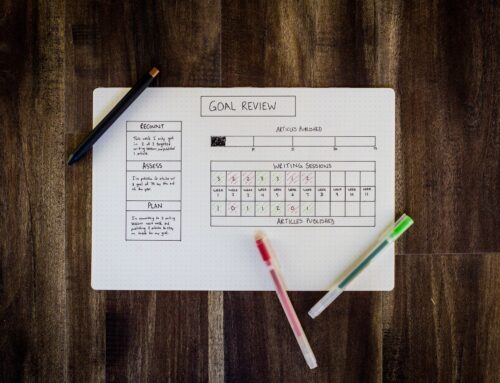You might compare this post to the introductory article in this series and wonder, “What does ‘the one thing I want my customer to do, think or feel’ have anything to do with ‘why I do business every day’?” Oh, friend, you’ll understand soon enough how your audience’s needs affect your business’ mission.
Where I work, we use a creative brief to collect key information about a campaign: nuts-and-bolts stuff like the client’s name, the campaign’s name, the budget, the start and end date. We also capture more directional information, like color and font choices, links to available assets like photos and illustrations.
And there’s one thing that’s more philosophical, and that one thing is: “The One Thing.”
What we’re trying to capture with that phrase is: What’s the one thing we want people to do, think or feel when they see our campaign?
Knowing what we want a customer’s reaction to our ad to be can help to guide our copywriting, image choices, layout and call to action. Do we want them to buy now? Do we want them to click through? Do we want them to hurry so they don’t miss out? You can make a lot of smart choices when you identify and write down “The One Thing.”
But it has a second-cousin that I’d like to introduce to you:
“What’s In It For Me?”
(Note: “Me” in this case is your customer. Not you. Not your boss. Not your business. Your customer.)
How is “What’s In It For Me?” (which some of you might also know as “WIIFM?”) different than “The One Thing?”
It’s not that they’re different. They’re similar. They’re adjacent.
But when codifying “The One Thing,” if you’re not careful, you could write that from the standpoint of the client, or of the marketer, or of the agency. (“I want them to buy this truck so we can show return on investment,” or “I want them to feel like they’re going to miss out on a pumpkin spice latte if they don’t buy one from me before November 1st.”)
The problem with that thinking is: You’re not inside the head of your customer.
When you apply “What’s In It For Me?” thinking–when you get inside the head of your customer and you write your “one thing” based on how your customer will think or feel or what they’ll do when she encounters your ad or product–that’s when you start creating ads that talk with them, build a relationship with them, earn their trust, and show them that your products and your “why” match up with their values.
Let’s try out a little “The One Thing” + “What’s In It For Me?” exercise with a real product (in a made-up scenario):
Client: Wendy’s
Campaign: Breakfast Baconator launch
The One Thing: We want people to try the Breakfast Baconator, because we feel one trial will generate repeat visits. (OK, that’s helpful to our creative team, because knowing we want people to “try” can inform copy and the call to action, and knowing it’s a launch might help a designer thing of something splashy to get attention.)
“What’s In It For Me?:” “I’m in a hurry every morning, so I need a cheap, fast, warm breakfast that will keep me full and that I can stay in the car to buy, and I’m tired of the same bland choices from other fast food joints.” (Wow, this is some fertile ground. You get words packed with value like “cheap,” “fast” and “warm,” you understand exactly what the customer’s story is at the time they make their decision, and you feel their frustration with the rut they’re stuck in.)
Again, how does this help you kickstart your “why?” Think about it using that made-up Wendy’s scenario: Your customer–your ideal customer or your prospective customer–is in a hurry, they want flavor, and they want convenience. You could start thinking of your “why”–heck, your whole Golden Circle–as:
We satisfy and delight discerning, ambitious, hungry people who are always on the go.
We do this by constantly refreshing our menu with hearty, convenient food.
They just happen to be breakfast sandwiches. From a burger joint.
I think that’s a valid reason to use “The One Thing” + “What’s In It For Me?” to kickstart your why.





Leave A Comment